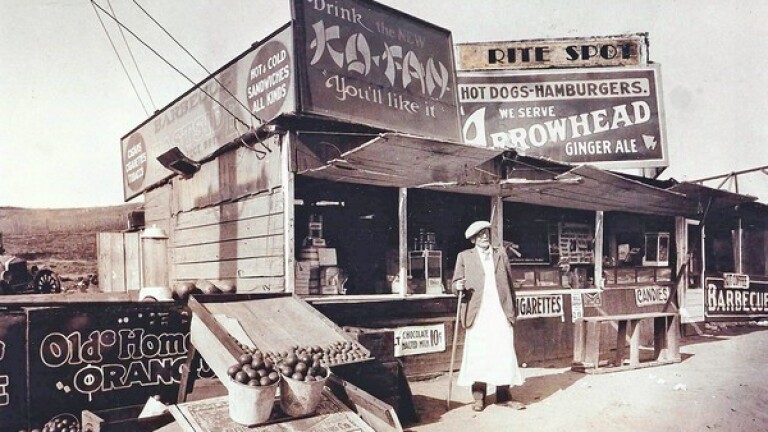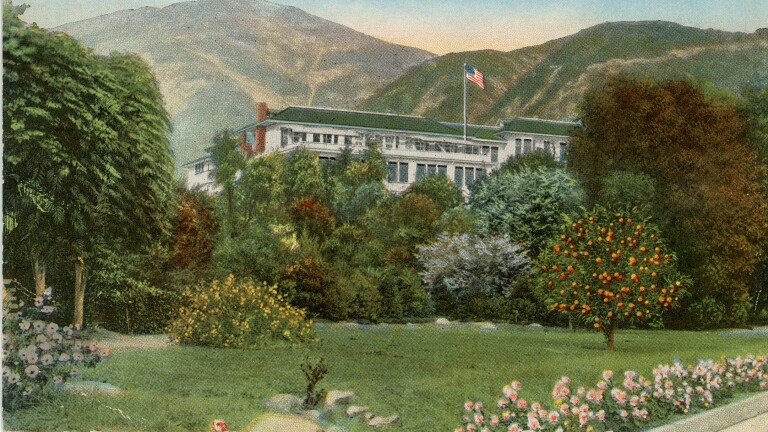Before Northridge, Other Earthquakes Rattled L.A.

This Friday marks the 20th anniversary of the 1994 Northridge earthquake, a seismic disaster that leveled freeways, pancaked soft-story apartment buildings, caused more than $20 billion worth of property damage, and claimed 57 lives. But Northridge is only the most recent earthquake to shake Los Angeles – and, in a region that is literally being torn apart by the forces of plate tectonics, a relatively meek example of the earth's destructive power.
Southern California's earthquake record extends to July 28, 1769, when the first land expedition by Europeans was making its way through the region.
A group of soldiers and clerics led by Gaspar de Portola had just pitched camp on the left bank of the Santa Ana River, across the stream from the Tongva village of Hotuuknga and near the present-day community of Olive. Fifty-two of the villagers had waded across the river to greet the newcomers. They were encouraging the Spaniards to join them, make their home there – they even offered to share their land – when the ground beneath them trembled.
An engineer, Miguel Constanso, recorded the scene – not without a measure of condescension – in his diary:
We experienced a terrible earthquake...One of the natives who, no doubt, held the office of priest among them, was at that time in the camp. Bewildered no less than we by the event, he began, with horrible cries and great manifestations of terror, to entreat the heavens, turning in all directions, and acting as though he would exorcise the elements.
Perhaps the Tongva interpreted the seismic event as a warning; when the Spaniards returned two years later to establish a mission on the site, the villagers' once-welcoming attitude had hardened into hostility. The people of Hotuuknga drove the missionaries off to the north, where they established a mission on the San Gabriel River instead.
Meanwhile, the shaking continued to rattle the Portola expedition's nerves. When the party reached present-day Los Angeles on August 1, the land greeted them with three violent aftershocks. Two days later, when they came across the La Brea Tar Pits, they (incorrectly) presumed that the shaking had forced the bubbling asphalt to the surface.
Scientists can be precise about neither the strength nor exact location of the 1769 earthquake; seismometers were not even a figment of the imagination then. But one researcher at UC Irvine, Lisa Grant Ludwig, has proposed that it might have been a magnitude 7.3+ earthquake that lifted the Orange County coastline three to 11 feet.
If Grant Ludwig is correct, the magnitude 7.3 temblor would be one of the strongest recorded earthquakes in Los Angeles history. But it still pales in comparison with what happened when a 220-mile stretch of the San Andreas Fault ruptured north of Los Angeles on the morning of January 9, 1857.
In some places, the earthquake (estimated at magnitude 7.9) opened up chasms in the ground as much as ten to twenty feet wide. At Fort Tejon, violent shaking continued for a terrifying two to three minutes. The Kern River changed direction and temporarily flowed upstream. Tulare Lake splashed itself into a froth, lapping over its shoreline and stranding fish miles from its beach. In L.A., the river sloshed from one bank to another, and the Los Angeles Star reported that the surrounding plains had undulated "as a field of wheat moved by the wind."
The Los Angeles River sloshed from one bank to another, and the Star reported that the surrounding plains had undulated "as a field of wheat moved by the wind."
Though stronger than anything Southern California has experienced since, neither the 1769 nor the 1857 earthquake qualifies as a major disaster – the region simply wasn't developed enough to suffer extensive damage or casualties. Only two people – a woman killed by a collapsing adobe house near Fort Tejon, and an old man who collapsed near Los Angeles, perhaps suffering a heart attack – died, and property damage was limited. In Los Angeles, the Star reported, "several houses were slightly cracked...but no material damage was sustained." If the same magnitude 7.9 quake were to strike today, however, estimates place the total potential property damage at $150 billion.
But significant earthquakes have jolted Los Angeles since it grew from a frontier town into a modern metropolis. The magnitude 6.4 Long Beach earthquake of 1933 – memorably recounted in John Fante's "Ask the Dust" – turned streets into heaps of rubble, killing 120 and causing more than $50 million in property damage. It also prompted swift updates to building codes, which likely saved lives in future seismic events. Other major earthquakes include the 1940 Imperial Valley earthquake (magnitude 6.9), the 1971 Sylmar earthquake (magnitude 6.5); the 1987 Whittier Narrows earthquake (magnitude 5.9); and the 1992 Landers earthquake (magnitude 7.3).
1933 Long Beach earthquake, magnitude 6.4



1940 Imperial Valley earthquake, magnitude 6.9
1971 Sylmar (San Fernando) earthquake, magnitude 6.5





1987 Whittier Narrows earthquake, magnitude 5.9




L.A. as Subject is an association of more than 230 libraries, museums, official archives, cultural institutions, and private collectors. Hosted by the USC Libraries, L.A. as Subject is dedicated to preserving and telling the sometimes-hidden stories and histories of the Los Angeles region.


